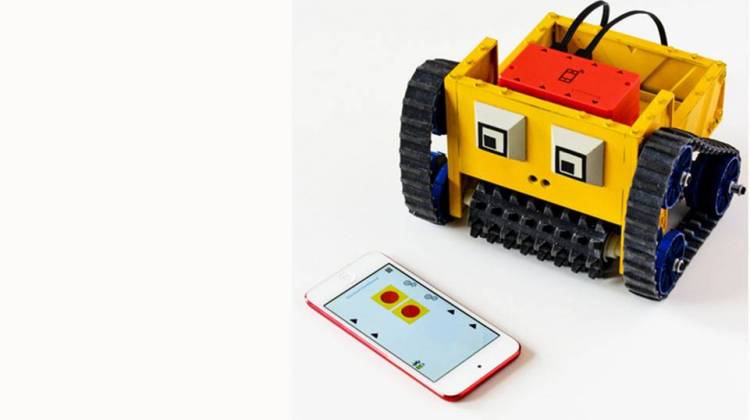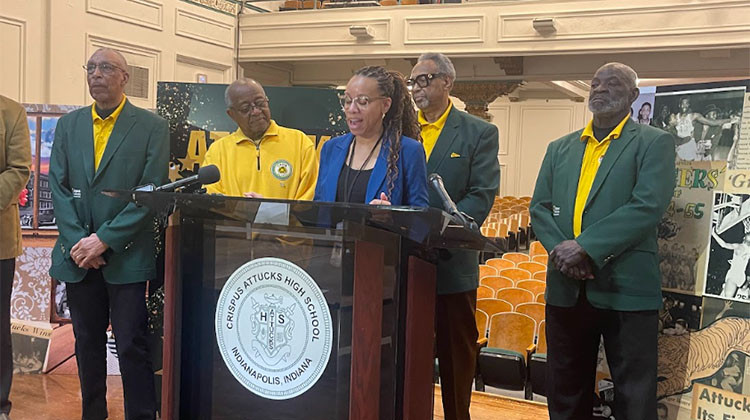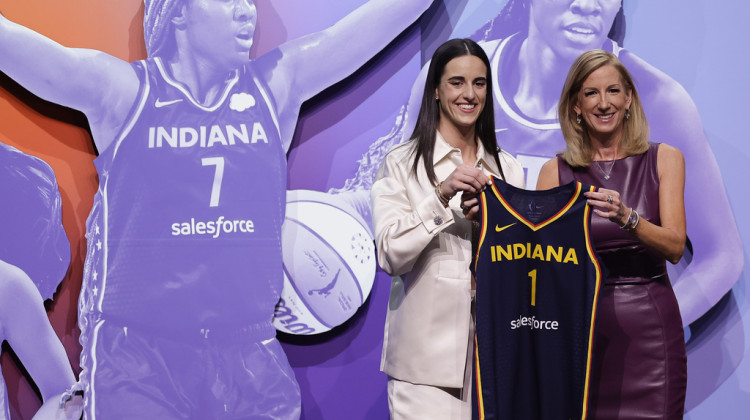Blocks grow with you — from basic alphabet blocks and geometric building blocks, to Tinker Toys and Legos and girder and panel sets, to bricks and split-face cinder blocks.
As pointed out in a recent post, blocks come in all sizes — for all sizes of people. Blocks are durable. Blocks encourage creativity. Blocks are gender neutral. Blocks seem like fixed points in a swirling world.
The simple alphabet block inspired by 17th century philosopher John Locke, for instance, can still be found on toy shelves. Companies such as Melissa & Doug still produce alphabet blocks similar to those of 100 years ago. Whatever blocks you played with as a child are probably still in the stores.
But blocks — even alphabet blocks — are evolving.
'Content Machine'
Pete Bultman, founder of the Uncle Goose block company, tells stories of companies in the early and middle 20th century that created all kinds of block sets — nursery rhymes and Disney-inspired.
When Pete decided to become a block maker, he was determined to build on that tradition — in his own way. So he has taken the familiar alphabet blocks and adorned them with foreign languages, hieroglyphics, the periodic table, the U.S. presidents and more. "Together with some of the best designers in the world," he says, "we've been able to create a little 'content machine' in which cubes provide an interesting challenge space to wrap ideas around."
"Ultimately it comes down to imaginative play and creating a space for children to discover new things in their own way," Pete says. "You never know when and how connections will be made in young brains."
Will the periodic table blocks inspire future scientists, he asks? Will the Big and Tall set inspire future typographers? "My only hope is that blocks do not get usurped into the world of technology... they are a pure, fundamental part of childhood that doesn't need any help from gadgetry."
A Chip In The Old Block
On the other hand, Michael Rosenblatt, founder of ATOMS smart blocks, sees a natural flow from building blocks to computer programming. "We draw a lot of inspiration from the simplicity of color-coded wooden blocks of the baby boomer generation," he says, "and the early days of personal computing — where a kid could build by tinkering in Basic or Logo programming languages."
He adds, "We created ATOMS to be the building blocks of the iPad generation, blocks that are smart enough to do things, and blend the virtual and physical worlds. You can build virtual ATOMS on an iPad that link to physical ATOMS on your coffee table."
Such programming, Michael says, is "very much a stage in building blocks in American history."
The Protojournalist: A sandbox for reportorial innovation. @NPRtpj
9(MDEwMDc1MzM3MDEzNDczOTA0MDc1MzViMQ001))
 DONATE
DONATE








 View More Programs
View More Programs

 Support WFYI. We can't do it without you.
Support WFYI. We can't do it without you.